When we lived in Hong Kong in 1997 and 1998 I was cautious and slow to make purchases. There was a lot of bad “antique” Chinese furniture at the time, although much less so than today. Besides my 18th century bamboo altar table, my blanc de chine and some Japanese porcelain, I didn’t buy much. The only other item to catch my eye was this late Ming Dynasty lacquer, sharkskin and ivory inlaid box. Yes, real Ming Dynasty, as in the one from 1368–1644. It was, of course, way out of my price range and my sweet husband, while very kind and generous, was like “you want to spend what on a box?!?” So I bided my time and worked a lot and saved and negotiated hard with the dealer, while simultaneously bringing him lots of customers (As one of the best dealers around he did have very good merchandise, so no real ulterior motive there). By the time we were ready to move home, he knew the box had to leave with me. As a side note, it’s not uncommon for very fine antique inlaid boxes, lap desks and the like to be more expensive than much larger pieces of furniture as the finest detail and workmanship went into them as well as the highest quality materials.
I’ve never seen a piece to compare with this one. The lacquer is so incredibly soft and silky and the ivory inlay is so fine. I can really see and feel the difference from my bone inlaid pieces. And before some of you get all bent out of shape about the ivory, do remember how old this box is! There are a few small inlay pieces that are green and while I don’t think they are jade as some have suggested, I’m not sure what they are. The edges of the box are wrapped in sharkskin or shagreen, a pebbled leather. There seems to be a four seasons theme, with flowers from each represented as well as the eight auspicious symbols of Buddhism.
My favorite view is the side with bamboo, cherry blossom and chrysanthemum.
At the absolute other end of the price and quality spectrum, this small round-topped table, with its collapsible octagon base is typically Indian by the style of its foliate carving, although such a common form could be from elsewhere in the region. It is not particularly old nor valuable. I found it at Yaskuni shrine, not long before I left Japan and it seemed like a cosmic signal that the move to Doha was a good next step, being somehow regionally appropriate – a rather broad reading of “local”. It has turned out to be the ideal size and height for between my two antique slipper chairs and thus extremely useful and quite decorative.
The bone inlay on this piece is almost irrelevant – literally besides the point – and clearly not secure as much of it has fallen out. It is the screen-like carving on the sides that catches the eye. Pieces like this are sometimes inlaid with brass in lieu of the bone or a combination of the two.
Indonesia is not the first place that comes to mind when thinking about inlay, but it does exist as a local handicraft both historically and currently, in particular on the island of Lombok, situated just east of Bali. The term used to refer to the mother of pearl inlaid furniture and accessories produced there is cukli. Without having any documentation, there is no doubt in my mind that the art of inlay arrived in Lombok either via the Dutch, who first visited in 1674, before colonizing the region or hand in hand with the introduction of Islam in either the 16th or 17th century. The Lombok pieces are referential to although simplified versions of the North African and Arabic patterns. You’ll see similar pieces in museums made in Burma or the Philippines too, which also had their origins through trade and colonization.
My trunk is gently vintage, no more than about 30 years old and in my possession for 15 of those. It is a fairly crude piece, the pattern typical of the work and clearly hand carved and individually glued with small pieces of mother of pearl. It does have a lovely patina which the newer Lombok pieces lack, having often been shellacked to within an inch of their lives.
Since I arrived in Doha, two new pieces of inlaid furniture have made their way home with me. Just after moving in, I spotted this inlaid Syrian table at one of the few antique stores in town. It caught my eye immediately as I was hoping that there would still be finds to be made here as I was already missing my shrine sales.
I absolutely loved the checkerboard-like detail and the fanciful carvings – it was a much more unusual piece than I’d seen in person before. Since then I’ve seen other even more elaborate museum quality pieces similar to this, but they have had a shiny formality and a stiffness to their design that this piece, with its lovely patina and cheeky pattern, does not.
I have been moving it around the house as you can tell from the photos, but there isn’t anywhere truly ideal for it here so I am planning on boxing it up and taking it back to our beach house in the US this summer. It would be added into the textile mix of this…
…and this. Pretty perfect, no?
My newest addition was unexpected although very needed. As I mentioned in a recent post, the overhead lights here are glaring and I just don’t have enough lamps. I stumbled across this bone inlaid Syrian beauty lying in pieces at a junk shop – it was so inexpensive that it was well worth the risk of buying. One of the charms of Doha is all the very low-priced services – the antithesis of Japan – and for about $12 the electrician rewired it (he came to my house to get it and drop it off) and then for another $12 the furniture repair guys put it back together (they came to my house to get it and drop it off). Add an IKEA lamp shade, which still needs a bit of jury rigging, and it is spectacular (if only I could stop by Robert Kime for a lampshade – then we’d be talking off the charts spectacular!) Clearly 20th century – it is electric after all – but nicely vintage based on the brass lamp fittings.
The lamp has a typically Syrian detail, the fine wire running through the pattern that in a truly valuable antique piece would actually be silver, brass or another metal. In this case it is also bone.
My pieces of inlaid furniture aren’t limited to the house here in Doha. The beach house has its own share, both with the table headed there from above and this set of stacking tables. These lovelies are Anglo-Indian – they have a traditional European shape with bone inlay. They were an incredible find in a very run down mixed dealer antiques mall on the Jersey shore in the very first summer after we had just moved in. I spotted them in the corner and knew their petite size and lines would be perfect for the house. After I dug them out, I could feel the radar of every person and other dealer in the place turn and fix on us intently (a comparison I would make to Sauron’s eye in ‘The Lord of the Rings’). I wanted to finish browsing so I turned to my sweet husband and said “do not let go of these for even an instant!” He thought I was being a bit crazy but as the sharks started circling he realized it was no joke. He is nowhere near as experienced as I am in shopping object envy and the way it can make others behave.
You can see how fine the detail is in comparison to my newer rougher pieces like the Lombok trunk and the small Indian side table. At the same time, these tables have plenty of nicks and wear, which adds to their charm. They are so flexible and useful, although most of the time they sit just like this, housing the library books in a lovely custom-made market basket by PaperGlueBamboo.
And I do actually have another inlaid piece at the shore – a pair of contemporary bone inlay and resin pieces, although I haven’t actually seen them in situ. I ordered the Aleppo side tables from Serena & Lily as my master bedroom night stands at the beach house just as I was leaving at the end of the summer. For some reason they seem to have been renamed the Leila table in the interim and are so popular that they are back-ordered 3-4 months on the website. I’ll have to let you know what I think of it once I get back to the USA for the summer.
They are going right in here.
Funnily enough, I just realized that don’t have any Japanese antiques or objects that I consider true inlay. My lacquer pieces are surface based and not inlaid. Odd don’t you think?
If you have any inlaid pieces you’d like to share, please drop me a note and photo!
Related Posts:
Provenance: Inlay
A Possible DIY…Painted Inlay Vanity?
Renovation Report…Vanity Dreams or Vanity Reality?




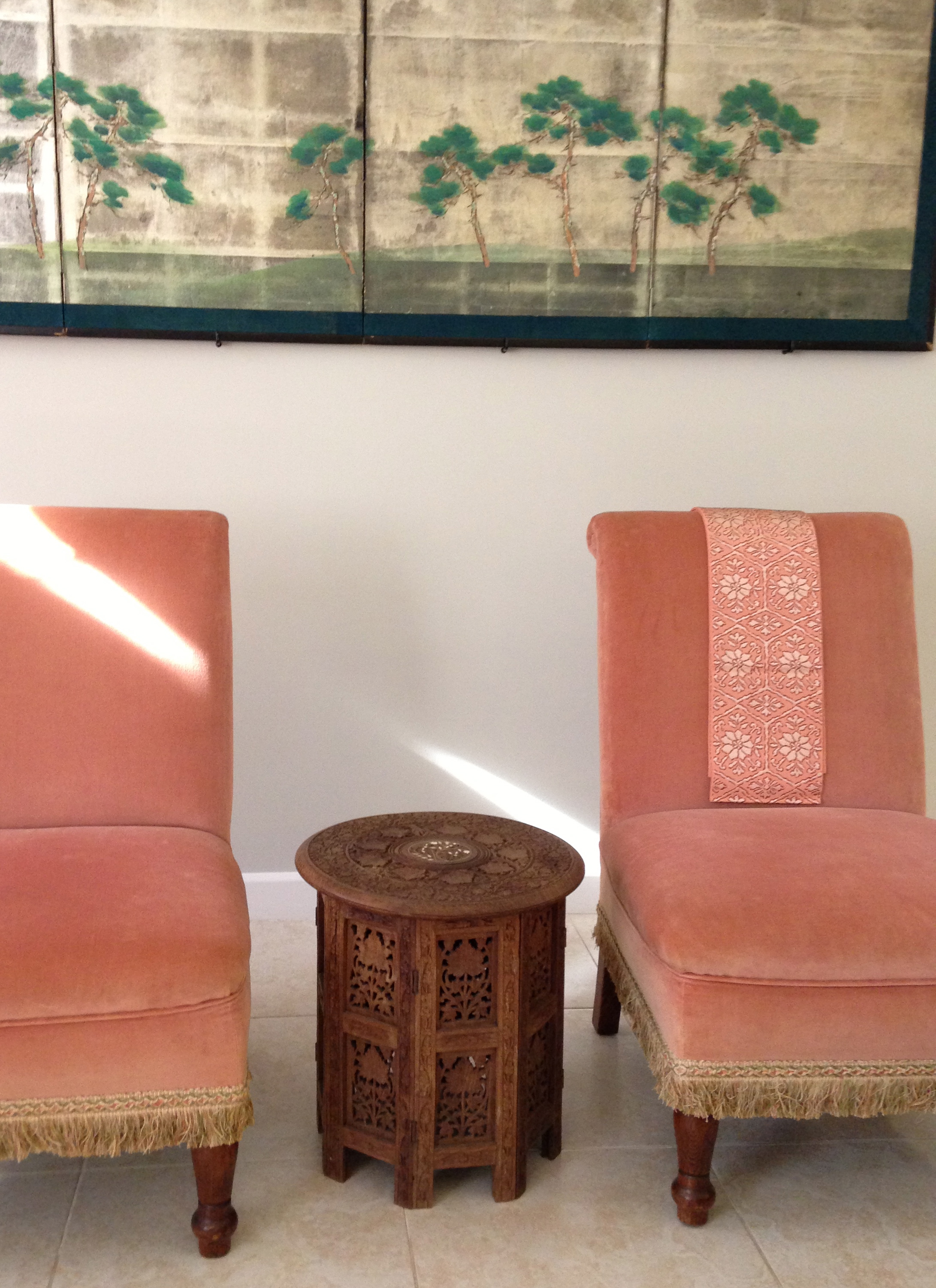



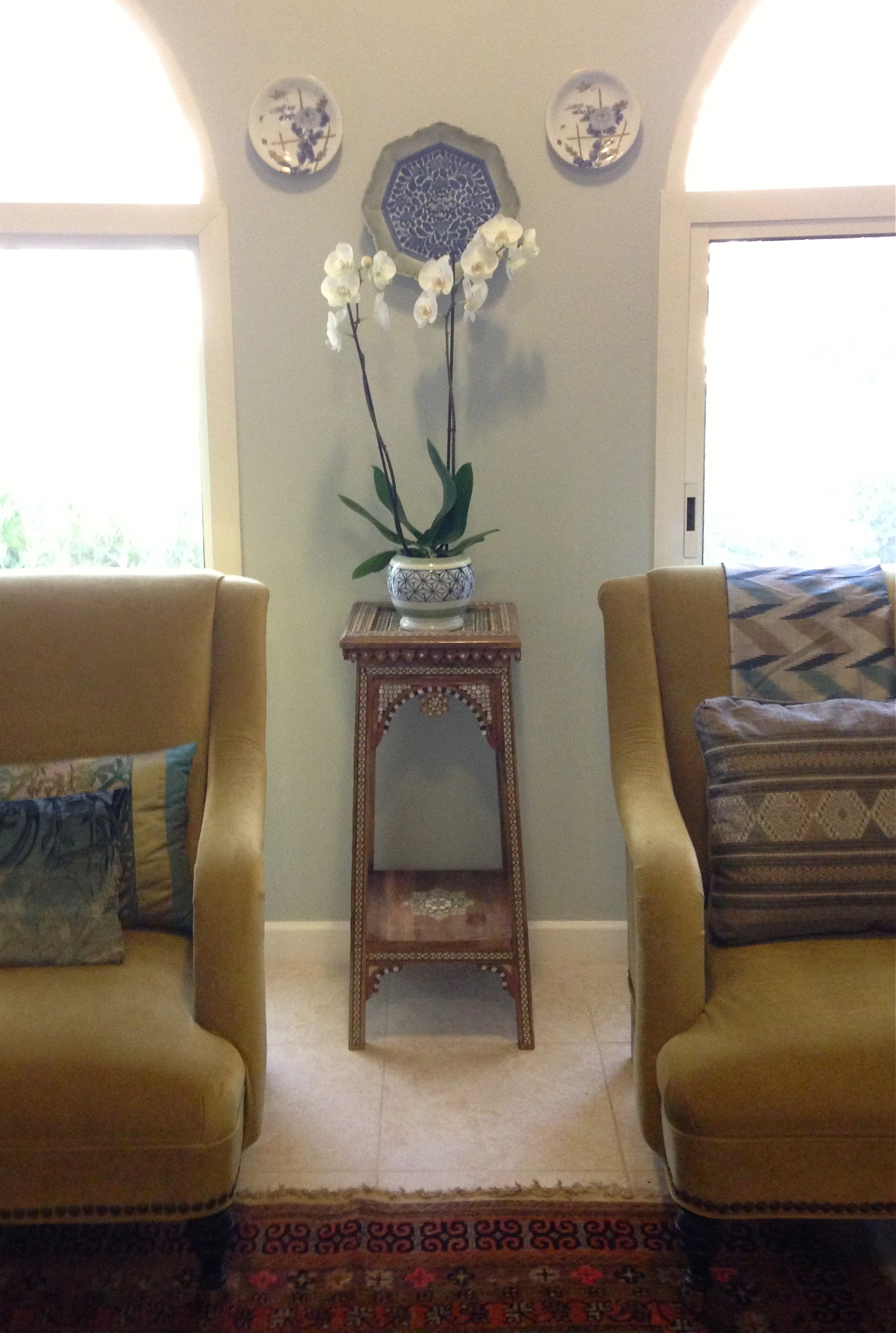





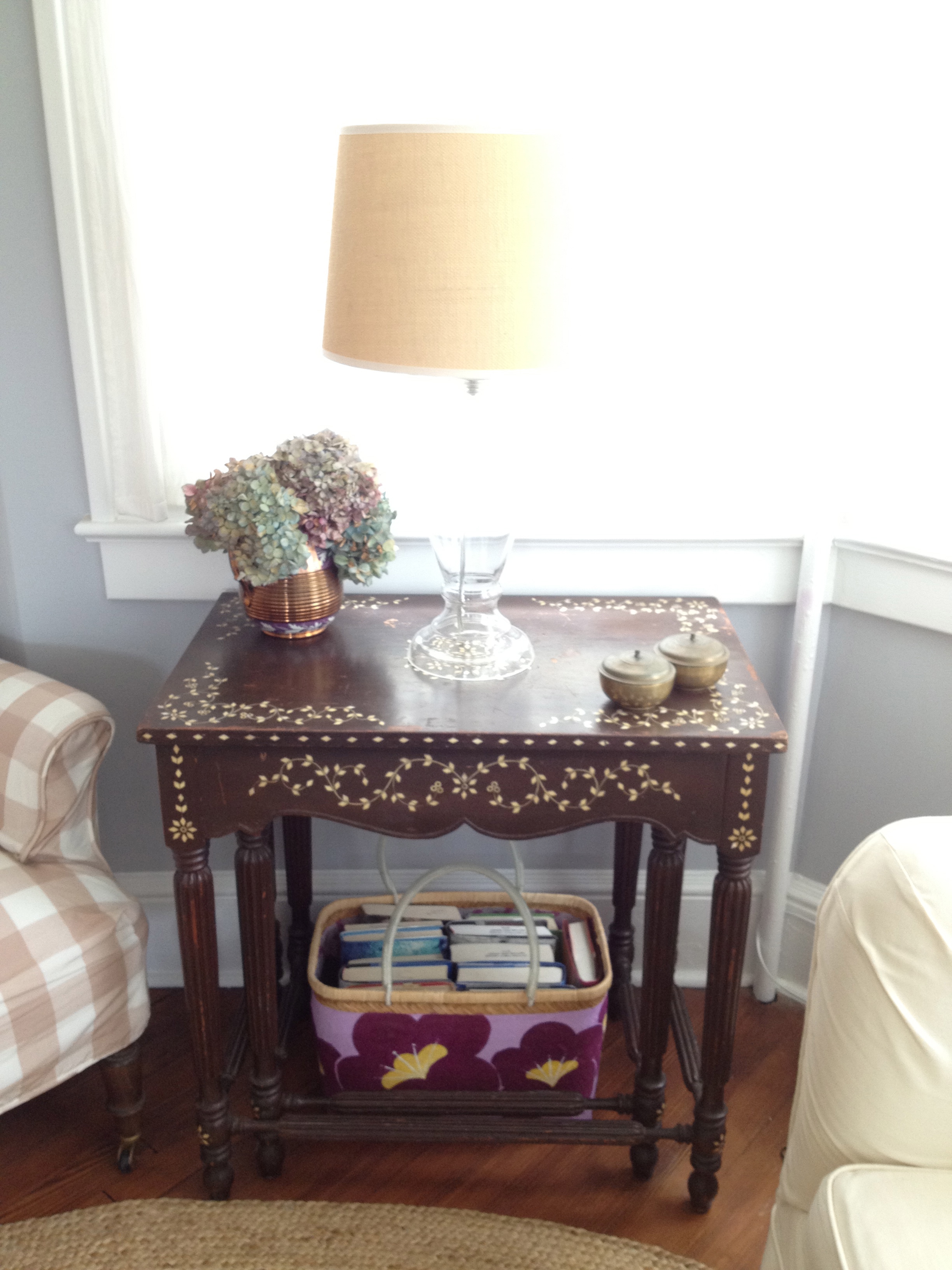

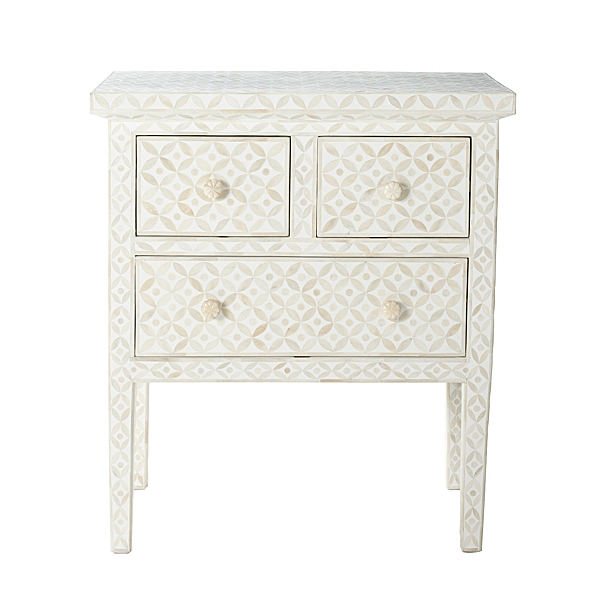
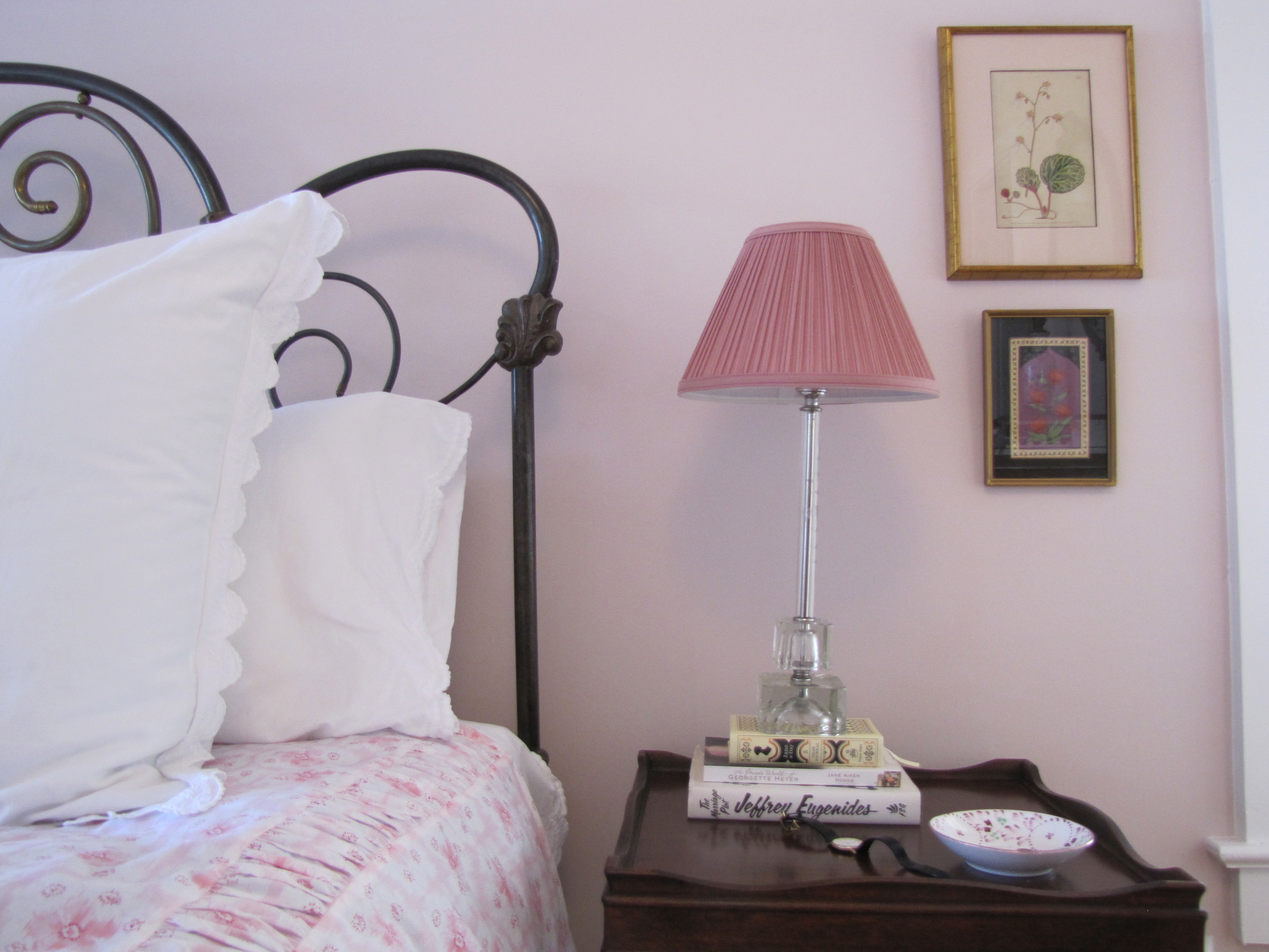
Jacqueline, you really do have a stunning collection of inlaid furniture and objects, among so many other things. Your knowledge of such things amazes me and as wonderful it is that you share it with us on a regular basis here on your blog, I can feel a book in the making somewhere. Thanks for sharing. x
Oh, you’re good alright. Seeing all the inlay through your eyes has deepened my appreciation of it. And that buttery, glowing, Chinese box with the shagreen! Sigh…..
You see why I had to have it!
I like the round inscription (details) design table the best. In fact all is very intricate. Thank you for sharing.
What a beautiful and interesting collection! The Chinese box is really lovely – exqusite workmanship. Thanks for sharing your personal treasures, Jacqueline! I see that you have settled beautifully!!! Enjoy your Instagram pics. Cheers Loi
Stunning pieces! I had no idea of the variety of styles. Thanks for the insights. Px
Love your collection Jacqueline, I think this is one of the best things about being an expat…being able to share a story to each piece. I recently purchased a Vietnamese inlay box that is given to brides to be, filled with treats for the wedding day. I came across a beautiful walking cane in a museum in Taipei over the weekend, hand carved, beautiful wood, with inlay detail throughout. The kind of thing you dream about finding in a back alley shop tucked away in a hustling bustling market in remote corners of the world. You know what that is like!
Best wishes… Jeanne xx
Jeanne, I think that, along with the incredible friendships, it is the thing I would miss the most if (and really when) we give up this life. I’ve been enjoying your ‘out and abouts’ in Vietnam and elsewhere on Instagram. Looks like all is well with you! xoxo
I have several pieces of furniture with the inlays. My father-in-law brought several pieces back from India in the 50’s and always told us that they were ivory inlaid. I have a coffee table and two end tables. It could very well be bone. The end tables legs are elephant faces. They screw off at the base for shipping and the coffee table can be taken apart also for shipping. I am interested in selling them. Do you know what they are worth?